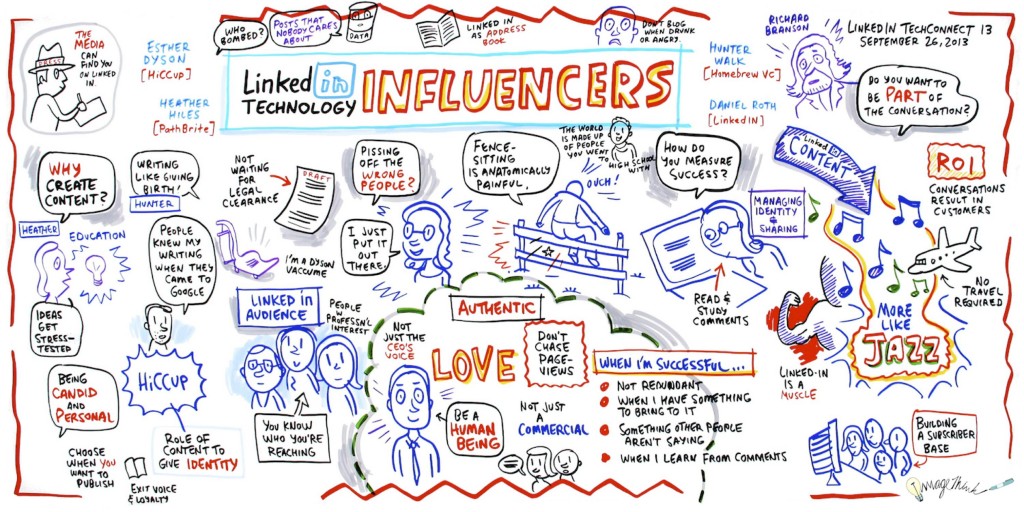Very recently, we have experienced an explosive growth in influencer marketing. We read about stories where companies leveraged this marketing strategy to increase their traffics and conversion rates dramatically. In fact, one such company even claimed to increase their “website traffic by over 400 percent with influencer marketing.”
But before more on this, let’s see what is meant by influencer marketing.
Understand Influencer Marketing
Although the term “influencer marketing” is quite popular these days, no one is absolutely sure about it. The biggest challenge is that to each brand it has a different image. Typically, it is defined as the marketing strategy that helps you identify and target influential individuals who are trusted by your target audience. The influence is usually driven by relationship between this individual and his/her followers as well as the individual’s expertise on the given subject.
The core of this concept is nothing new. Remember in the old days how brands used celebrities to advertise and promote their products, endorsing their brand value? Influencer marketing as we see it today is just an extended and more robust version of an age-old concept. Brands realized that celebrity endorsement is not only expensive, it was gradually losing its touch as people became cynical of the entire thing as it was based on monetary interest. In fact, a recent Nike study found that less than 25 percent of customers don’t believe most online advertisements.
As a result, brands focused on real people who have influence over their community. Popular bloggers, industry leaders and subject experts were targeted by brands as influencers due to their credibility and the trust people put on them. Wouldn’t you trust a brand if Guy Kawasaki says he trust them too?
In addition to popular bloggers and celebrities, brands are now targeting everyday users as they too can have a large impact on other buyers. As social networking became popular, a lot of brands across a large vertical shifted their focus on influencers. They are asking these individuals to promote/speak for their brand, and in turn, these influencers are often compensated through freebies, commission-based programs and paid contract-based positions based on the engagement they can create based on peer recommendations.
Scopes of Influencer Marketing
Basically, influencer marketing is just another form of word-of-mouth marketing where industry influencers speak about your products and services. And we are already aware of the power word-of-mouth marketing has over traditional forms of marketing. In fact, according to a McKinsey Study, this form of marketing generates more than double the sales generated by paid advertising. The study also includes that customers acquired through word-of-mouth marketing have 37 percent higher retention rate.
Another report published on The Guardian indicates that the Internet will be used as the key source of information by around 69 percent of consumers within the next five years. It is therefore quite obvious that peer recommendations play a significant role to persuade consumers, making influencer marketing a highly leveraged strategy among marketers.
Brands and Influencer Marketing
Let’s take a note how the popular car manufacturing brand General Motors is using influencer marketing to gain a competitive edge. They have created an exclusive website with limited access to the special and privileged “GM Insiders,” who were basically customers with a deep knowledge about the brand and have had an affinity and long-standing history for GM’s products. It featured exclusive news, sneak peeks and special offers to encourage these privileged customers to talk to their friends and family about GM cars.
ModCloth is another brand that is using influencer marketing just perfectly. This vintage clothing company is very active on social media channels where they share images provided by their audience members wearing ModCloth’s clothing. This is one of the best ways to make your customers feel special, encouraging them to post more and more pictures in order to create engagement. Besides, these customers are more likely to share these posts within their networks, which again increase ModCloth’s social mentions and reach.
In fact, a lot of fashion and lifestyle brands are incorporating this strategy. Some are even sending their products for free to the influencers and ask them to review the whole experience on their website/blogs and share them on their social media accounts. In addition, few brands are even holding contests and asking their audience to enter them to win free goodies. Most contests are built around the brand’s products such as asking users why they would rather use this particular item over others or may be to share an image (again related to the product) and the maximum share and liking wins the contest.
Google did something similar with Google Glass back in 2013. The tech giant asked users to justify within 50 words or less why they deserve to receive an early version of Glass. And the winner could buy a Google Glass for just $1,500. With 8,000 beta testers, called Explorers, the product received a lot of buzz even before Google decided its official launch. Each of these 8,000 beta testers were actually Google’s influencers who created an excitement around the product through word-of-mouth marketing.
Finding Good Influencers
If you too want to leverage influencer marketing, you need to find some good influencers to start with. There are different types of influencers but you need to find the most trustworthy ones, establish a strong relationship with them and find a way to motivate them to promote your brand. You must consider including some authority figures such as bloggers, speakers and industry experts as your influencers as the message they give out creates a positive impact on your buyers.
In addition, consider enlisting your satisfied customers. A Nielsen report indicates that 92 percent of customers trust their peers, whereas only 18 percent trust bloggers, celebrities and other influencers.
When it comes to selecting an influencer do not judge by the size of his/her friend or follower base. Rather look at the engagement. Are your influencers engaged with their readers? The current trends indicate that mom and millennial demographics are more likely to have a better and stronger influencing affect.
What you need to ensure is that your influencer is highly connected with his/her friends and followers. YOU can determine this by analysing the number of shares their posts/tweets receive along with the number of likes, comments and mentions.
Conclusion
Online marketing is a rather challenging task, especially because consumers are becoming more and more cynical of information brands are providing. Brands therefore need to focus on building trust with their existing and potential customers, which paves way for other things. When you have the right kind of influencers working for your brands earning that trust becomes relatively easier as you don’t have to shout about your brand; some other trusted, authority figures are already doing that for you.







